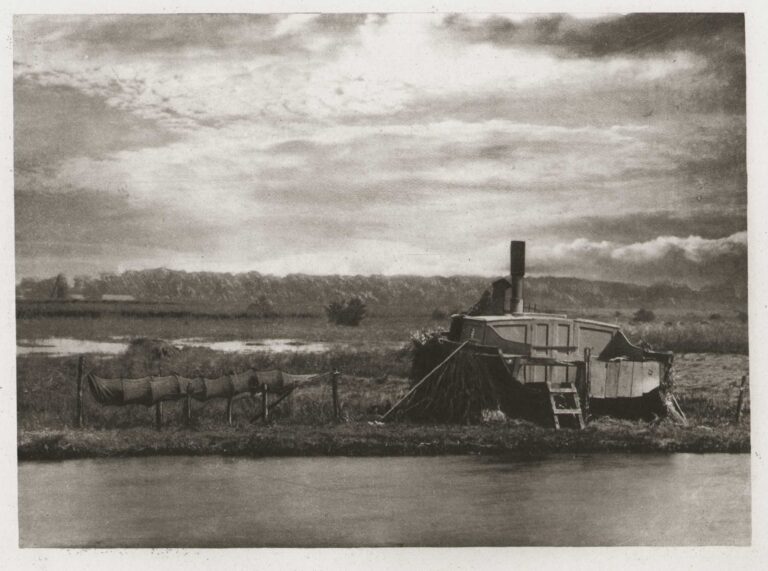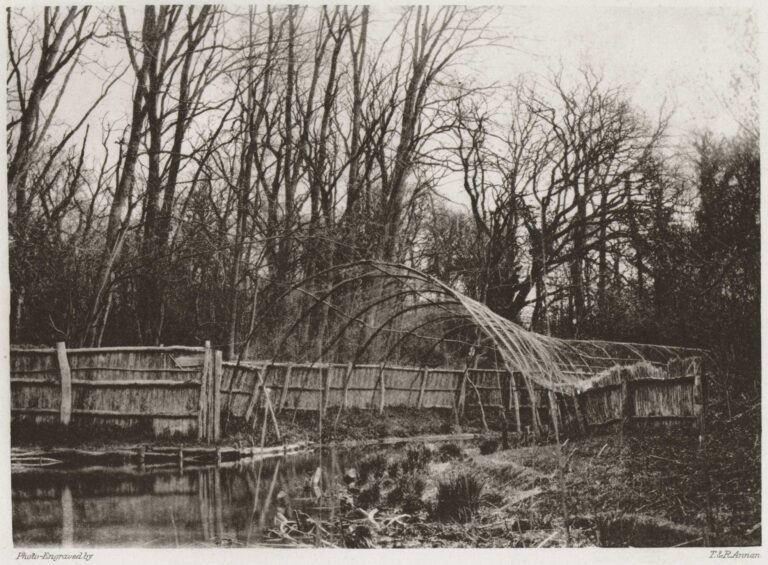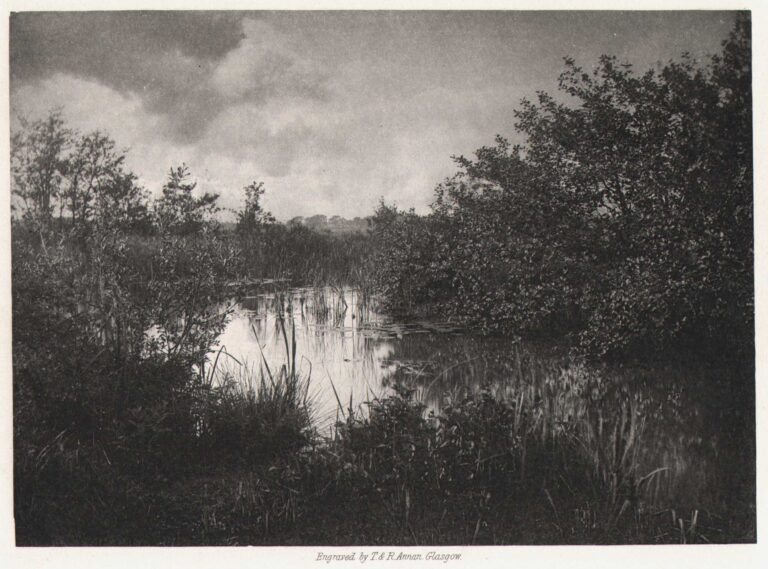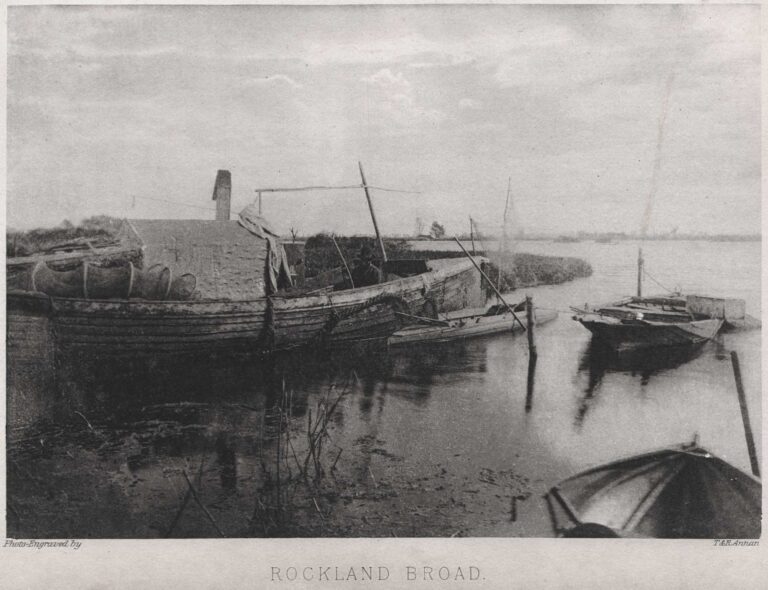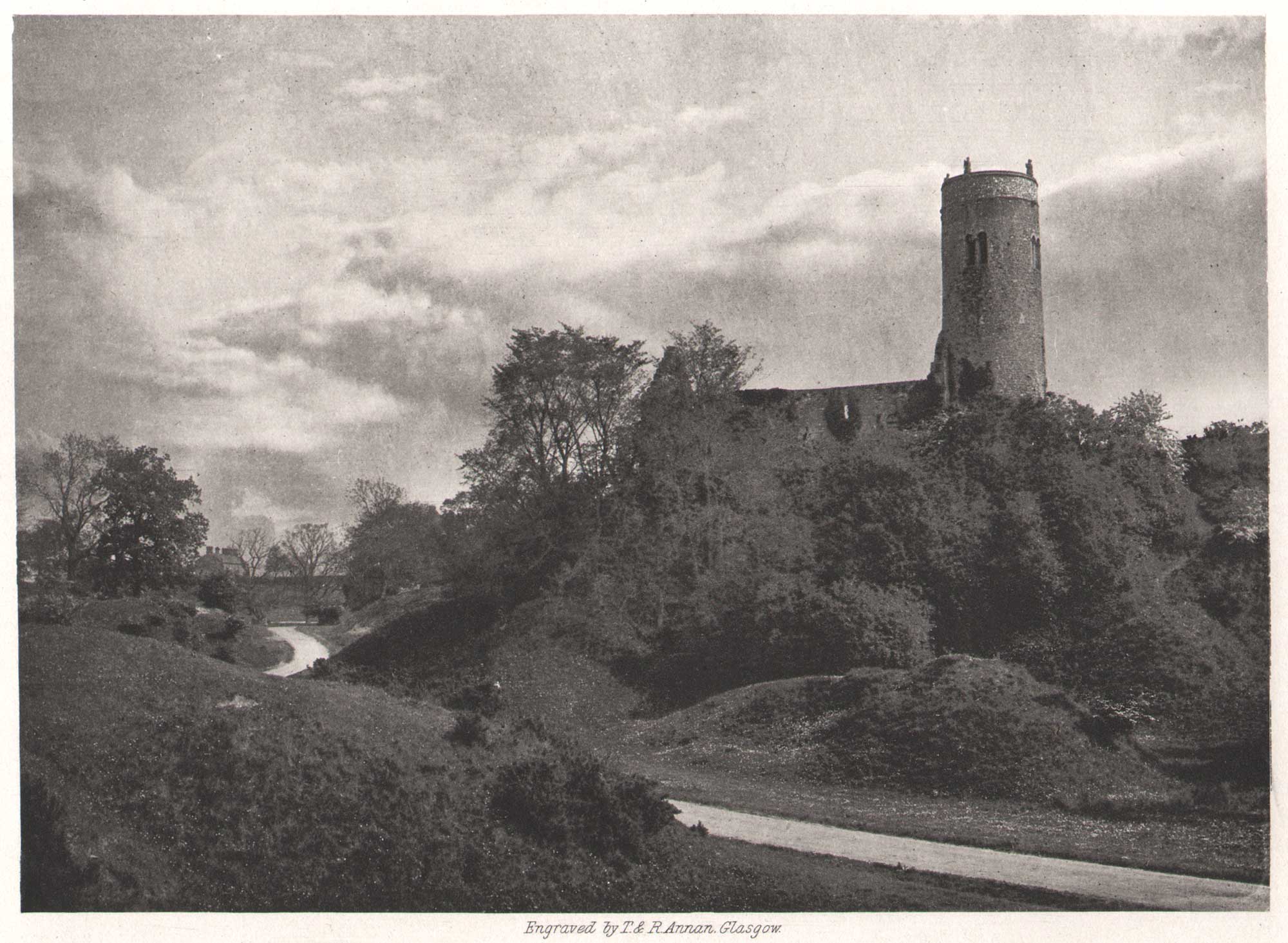
Whitlingham Church
“Upon the summit of the high ground skirting Whitlingham Reach stands a ruin which was once the parish church of Whitlingham.” -original caption from folio
“This is Whitlingham White House; and from here for about a mile the ground on the right bank is high and wooded, with a ruined church crowning the eminence, and the slopes broken with the old workings of marl-pits. ” ⎯G. Christopher Davies, 1883 (1.)
The Norfolk Heritage Explorer website gives the following summary for this church, known in modern times as the Ruins of St Andrew’s Church, Whitlingham:
Set on a ridge above the river, this ruined church once consisted of a round west tower, probably of Norman date, and a 14th and 15th century nave, chancel and south porch. After being abandoned in the mid 17th century the building fell into disrepair, only the tower surviving to any great height. This fell in 1940 and the east wall of the chancel was demolished in 1997 after being deemed unsafe. Today only fragments of the church survive.
The excellent Broadland Memories Blog provides further background. In their post titled Whitlingham Church – Folklore and Folly, old photographs of the ruin from when Davies took the view here, about 1882, and others are featured, including modern-day photos showing the state of its present decay.
George Christopher Davies: 1849-1922
Davies was “a prolific photographer and writer who played an important role in encouraging popular awareness of the Norfolk Broads.” (2.) The following biography of the artist courtesy: Norfolk Through a Lens: A guide to the Photographic Collections held by Norfolk Library & Information Service –
Born in Shropshire, Davies practised as a solicitor for a time; he first came to Norfolk in 1871 to serve part of his articles. He was later to become Chief Clerk at Norfolk County Council in 1906, also serving as Clerk of the Peace. In his private life he was a nature lover, sportsman and photographer. His skills as a writer did much to popularise the Norfolk Broads as a rural idyll and holiday destination. When he was 27 he wrote ‘The Swan and her Crew’ an adventure story for boys set in the Norfolk Broads which created a great interest and enthusiasm for the area. His major work ‘Handbook to the Rivers and Broads of Norfolk and Suffolk’ was published in 55 editions and contained 12 of his own photographs. Davies also produced other books about the Broads, sailing, Belgian waterways, natural history, fishing, adventure books for children and even some on government administration. Towards the end of his life he acquired Burnt Fen Broad and spent many hours there during his retirement.
